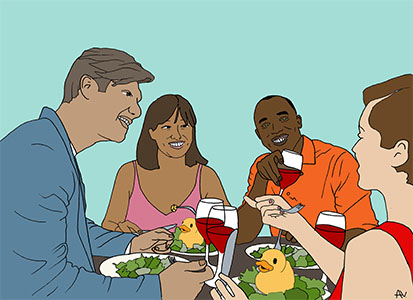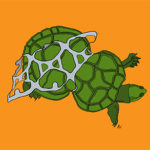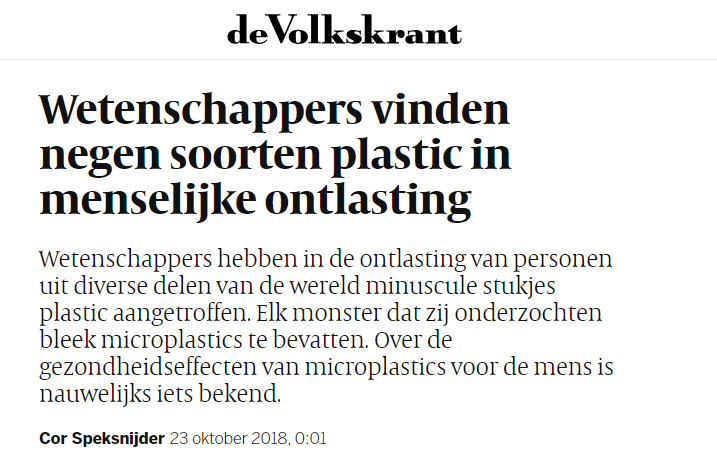Plastic on our plate
Plastic can be found everywhere in the ocean It lies on the coast, floats at the surface, or sinks to the ocean floor. With so much plastic in the ocean, it’s no wonder that hundreds of species of sea animals have plastic in their stomachs, including fish and shellfish consumed by humans. Could that plastic also be harmful to us?
Mussels gourmands beware…
A study in Belgium has calculated how much plastic mussel connoisseurs inadvertently consume each year. People who eat a lot of mussels can ingest up to 11,000 pieces of plastic in a single year. That equals around 90 pieces per meal, spread out over 122 meals 2, or around the same amount of plastic as eating a sandwich baggie along with your sandwich for lunch!
Poisoned by plastic

Did you know… There is plastic in one out of every four fish sold at market in the US and Indonesia 1.
In order to improve the characteristics of plastic, we sometimes add chemicals such as fire retardants or softeners. Some of these substances can disrupt the hormone system in humans 5. Softeners, or plasticisers, are added to plastics to make them flexible and transparent. Research on animals has shown that these plasticisers can cause cancer. They are also harmful for the reproductive system, even at low doses 6.
When they eat it, the toxic chemicals can accumulate in their bodies. When we eat those animals in turn, the toxic chemicals they carry can also enter our bodies as well.
Plastic poop
As you can read in this article in the Volkskrant, we consume quite a bit of microplastic binnen. The effects this has on our health have not been studied enough to know how harmful it can be 7,3 . As far as we know, the plastic stays in our stomachs, and isn’t transported to other parts of the body 4. That means we just poop all of the plastic out again.
1 Rochman, C. M., Tahir, A., Williams, S. L., Baxa, D. V., Lam, R., Miller, J. T., … & Teh, S. J. (2015). Anthropogenic debris in seafood: Plastic debris and fibers from textiles in fish and bivalves sold for human consumption. Scientific reports, 5, 14340.
2 Van Cauwenberghe, L., & Janssen, C. R. (2014). Microplastics in bivalves cultured for human consumption. Environmental pollution, 193, 65-70.
3 Bouwmeester, H., Hollman, P. C., & Peters, R. J. (2015). Potential health impact of environmentally released micro-and nanoplastics in the human food production chain: experiences from nanotoxicology. Environmental science & technology, 49(15), 8932-8947.
4 Galloway, T. S. (2015). Micro-and nano-plastics and human health. In Marine anthropogenic litter (pp. 343-366). Springer, Cham.
5 Talsness, C. E., Andrade, A. J., Kuriyama, S. N., Taylor, J. A., & Vom Saal, F. S. (2009). Components of plastic: experimental studies in animals and relevance for human health. Philosophical Transactions of the Royal Society of London B: Biological Sciences, 364(1526), 2079-2096.
6 Meeker, J. D., Sathyanarayana, S., & Swan, S. H. (2009). Phthalates and other additives in plastics: human exposure and associated health outcomes. Philosophical Transactions of the Royal Society of London B: Biological Sciences, 364(1526), 2097-2113.
7 Hauser, R., & Calafat, A. M. (2005). Phthalates and human health. Occupational and environmental medicine, 62(11), 806-818.
More interesting info…






